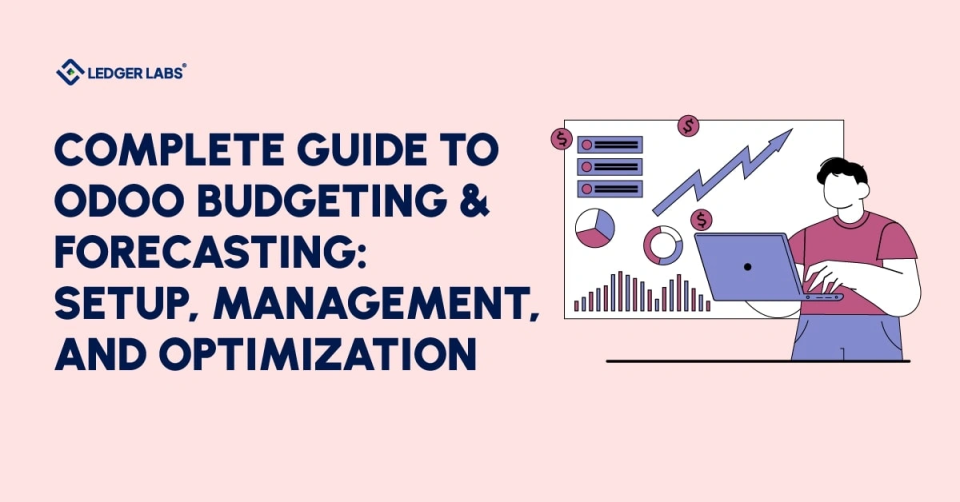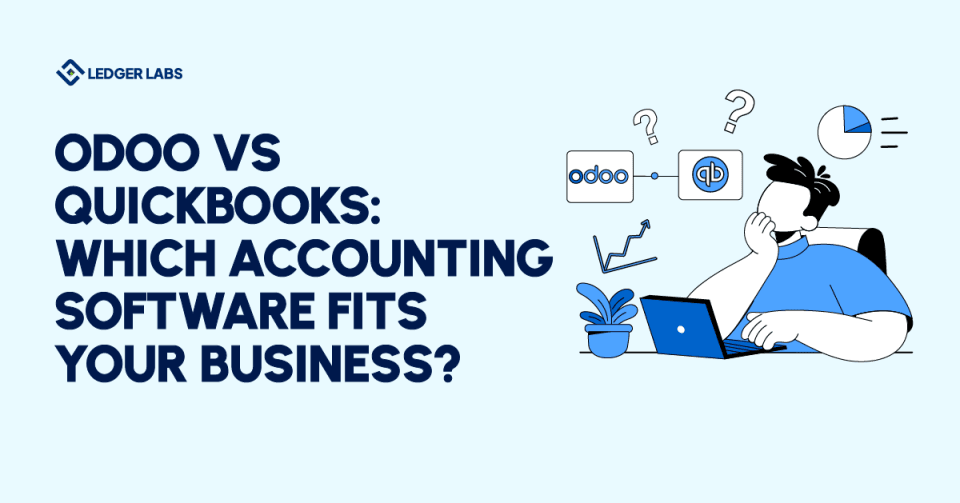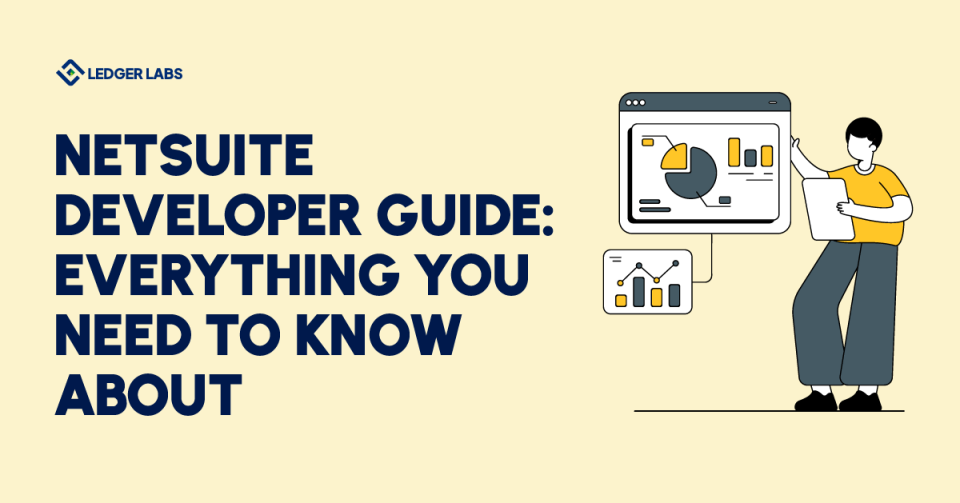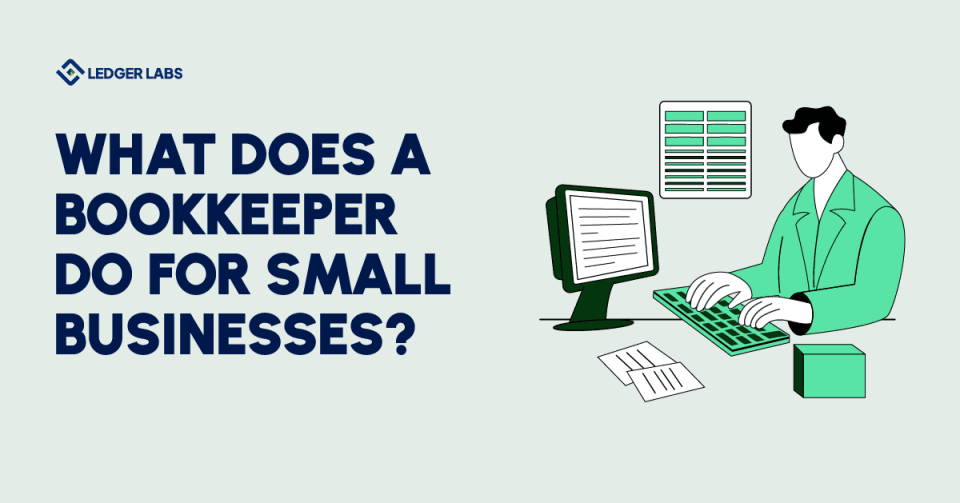Are you tired of wrestling with spreadsheet chaos every budget cycle, watching your financial plans crumble the moment reality hits? You’re not alone—studies show that 70% of businesses abandon their budgets within the first quarter because traditional methods simply can’t keep pace with real business dynamics.
Odoo Budgeting & Forecasting transforms this frustrating cycle into streamlined financial control, but only if you know how to harness its full potential. With companies reporting up to 40% time savings on financial planning after proper ERP implementation, the difference between basic setup and optimization can make or break your budget accuracy.
We’ll walk you through everything from initial configuration to advanced forecasting techniques, ensuring you avoid the common pitfalls that leave most users stuck with basic functionality.
Key Takeaways
- Step-by-step setup for both analytic and financial budgets.
- Advanced forecasting techniques that actually predict cash flow
- Performance tracking systems that catch variances before they become problems
- Best practices that separate budget pros from spreadsheet strugglers
Introduction to Odoo Budgeting & Forecasting
Why do 60% of small businesses operate without a formal budget, yet wonder why cash flow surprises derail their growth plans? The answer lies in outdated systems that make budgeting feel like punishment rather than empowerment.
Traditional budgeting approaches—those endless Excel marathons and disconnected financial tools—create more chaos than clarity. You’re juggling multiple spreadsheets, chasing down department heads for updates, and by the time you consolidate everything, your “current” budget is already three weeks behind reality.
The modern business landscape demands real-time financial intelligence. Companies that embrace integrated ERP budgeting software report 45% faster budget cycles and 30% more accurate forecasts compared to spreadsheet-dependent competitors. This isn’t just about efficiency—it’s about survival in markets where cash flow visibility can mean the difference between seizing opportunities and missing them entirely.
Odoo transforms budgeting from reactive scrambling to proactive strategy. Unlike standalone budgeting tools that exist in isolation, Odoo’s integrated approach connects your budgets directly to sales pipelines, purchase orders, and project costs. When your sales team closes a deal, your revenue forecasts update automatically. When procurement places an order, your expense budgets reflect the commitment immediately.
This integration advantage positions Odoo budgeting & forecasting uniquely in the ERP landscape. While competitors like NetSuite charge premium prices for basic functionality, and QuickBooks offers limited forecasting capabilities, Odoo delivers enterprise-grade budgeting tools at a fraction of traditional ERP costs.
Consider this: Manufacturing companies using integrated budgeting systems typically see 25% better budget accuracy within their first year. Meanwhile, research from the Association for Financial Professionals shows that companies with connected financial planning processes are 2.5 times more likely to exceed their growth targets.
Odoo budgeting & forecasting eliminates the guesswork by connecting financial planning directly to operational reality, giving businesses the real-time visibility needed to make confident decisions and maintain healthy cash flow.
Understanding Odoo's Budgeting Architecture
Now that we’ve established why integrated budgeting gives you a competitive edge, let’s dive into how Odoo’s system actually works under the hood.
Here’s what confuses most new users: Odoo doesn’t just have “one budgeting tool”—it offers two distinct approaches that serve completely different purposes. Understanding this architecture is crucial because choosing the wrong budget type for your needs can derail your entire financial planning process.
What is Odoo Budget Management?
Odoo budget management is the systematic process of creating, tracking, and analyzing financial plans within Odoo’s integrated ERP environment. Unlike standalone tools, it connects directly to your operational data—from sales forecasts to purchase commitments—providing real-time budget performance insights that drive informed business decisions.
Analytic vs Financial Budgets Explained
Analytic budgets track specific projects, departments, or activities. Think of them as your microscope for detailed financial analysis. When you need to know if your marketing department is staying within budget or whether Project Alpha is profitable, analytic budgets provide the granular visibility you need.
These budgets work through Odoo’s analytic accounting system, allowing you to:
- Monitor project profitability in real-time
- Track departmental spending against allocated amounts
- Analyze cost centers individually
- Create detailed variance reports by activity
Financial budgets focus on your overall company performance. They’re your telescope for big-picture financial health, directly tied to your profit & loss statements and general ledger accounts. Financial budgets help you answer questions like: “Are we meeting our revenue targets this quarter?” or “How do our actual expenses compare to our annual plan?”
The key difference lies in scope and integration. Analytic budgets excel at project-level tracking, while financial budgets provide the high-level view CFOs need for board presentations and investor reports.
Odoo Budgeting Module Overview
The Odoo budgeting module seamlessly integrates with your existing workflows through intelligent automation. When your sales team creates a quote, the system can automatically update revenue forecasts. When procurement approves a purchase order, expense budgets reflect the commitment instantly.
This integration extends across modules:
- Sales Integration: Pipeline data feeds revenue forecasting
- Purchase Integration: Committed costs appear in expense budgets immediately
- Project Integration: Time tracking and expenses automatically update project budgets
- Accounting Integration: Actual figures flow directly from your general ledger
According to research from the Institute of Management Accountants, companies using integrated budget planning systems reduce their budget cycle time by an average of 40% while improving accuracy by 25%.
Understanding Odoo’s dual budget architecture—analytic for detailed project tracking and financial for company-wide performance—ensures you choose the right approach for each planning scenario and maximize your budgeting effectiveness.
Ready to put this knowledge into action? Let’s walk through the complete setup process step by step.
Step-by-Step Setup Guide for Odoo Budgeting
Now that you understand the dual architecture approach, let’s turn that knowledge into a working budget system.
What’s the biggest mistake new users make when learning how to set up budgets in Odoo? They skip the prerequisites and dive straight into budget creation, only to hit roadblocks that force them to start over. Let’s avoid that frustration entirely.
Prerequisites and Module Activation
Before creating your first budget, you’ll need proper foundation modules activated. Navigate to Settings > Apps and ensure you have the Accounting app installed—this is non-negotiable for any budgeting functionality.
For analytic budgets, activate Analytic Accounting under Settings > Configuration > Analytics. This unlocks project and department-level tracking capabilities that power detailed budget analysis.
Pro tip: Enable these modules in a test environment first if you’re working with live data.
Setting Up Analytic Budgets
Analytic budgets give you surgical precision over specific projects or departments. Here’s your streamlined setup process:
Start by creating analytic plans and accounts under Accounting > Configuration > Analytics > Analytic Plans. Think of plans as categories (Projects, Departments, Cost Centers) and accounts as specific items within those categories (Website Redesign, Marketing Department, Atlanta Office).
Navigate to Accounting > Analytics > Analytic Budgets and click New. Fill in your budget name, responsible person, and time period. The magic happens in the Budget Lines section—this is where you connect your analytic accounts to specific dollar amounts.
Here’s where budget control becomes powerful: Set your budgeted amounts conservatively. Odoo will track “Committed” amounts (from purchase orders) and “Achieved” amounts (from actual invoices) against your budget in real-time.
Click Open to activate your budget. Once active, any purchase orders or expenses tagged with your analytic accounts will automatically update your budget tracking.
Configuring Financial Budgets
Financial budgets provide the high-level view your executives need for strategic decisions. The setup process differs significantly from analytic budgets because they integrate directly with your chart of accounts.
Access financial budgets through Accounting > Reporting > Profit and Loss. This might seem counterintuitive, but financial budgets live within your P&L reporting rather than as separate entities.
Click the Budget button in the top toolbar and create a new budget by naming it descriptively (Annual 2024 Budget, Q1 Targets, etc.). A new column appears next to your Balance column, ready for budget amounts.
Here’s the key insight most users miss: Assign budget amounts at the account level, not the transaction level. Input your expected revenue for each income account and planned expenses for each expense account. The system automatically calculates variances and percentages as actual transactions post to these accounts.
For enhanced tracking, use the date selector to break budgets into monthly or quarterly periods. This granular approach helps identify seasonal patterns and prevents annual budget surprises from quarterly overspending.
Budgeting automation kicks in immediately after setup. Your budgets now update automatically as transactions flow through your system, eliminating manual data entry and providing real-time financial visibility.
Following this systematic setup approach ensures your budgets integrate seamlessly with daily operations, providing automated tracking and real-time insights that traditional spreadsheet methods simply cannot match.
With your budgets properly configured, you’re ready to explore advanced forecasting capabilities that transform basic budgets into predictive financial intelligence.
Advanced Odoo Forecasting Techniques
With your budget foundation properly established, you’re ready to unlock predictive capabilities that separate strategic planners from reactive managers.
Why do 73% of CFOs say their current forecasting methods fail to predict actual business outcomes? The answer lies in treating forecasting as a spreadsheet exercise instead of leveraging integrated forecasting tools that connect to real operational data.
Odoo financial forecasting transforms guesswork into data-driven predictions by analyzing patterns across your entire business ecosystem—from sales pipeline velocity to supplier payment terms.
Cash Flow Forecasting in Odoo
Cash flow forecasting in Odoo operates through intelligent integration across your receivables and payables. The system analyzes your sales pipeline stages, customer payment histories, and invoice due dates to predict incoming cash with remarkable accuracy.
Navigate to Accounting > Reporting > Executive Summary to access your cash flow forecast dashboard. The system automatically factors in confirmed sales orders, pending customer invoices, and scheduled supplier payments to create rolling 13-week cash projections.
Here’s the game-changer: Odoo learns from your actual cash collection patterns. If customers typically pay 5 days late, the forecast adjusts automatically. When suppliers offer early payment discounts, those opportunities appear in your projections immediately.
Revenue Forecasting Strategies
Revenue forecasting becomes predictive intelligence when you leverage Odoo’s CRM integration. Instead of hoping your sales team hits targets, you’ll see probability-weighted revenue projections based on actual pipeline data.
The system analyzes your sales funnel conversion rates, average deal sizes, and typical sales cycle lengths to generate realistic revenue forecasts. Each opportunity in your pipeline contributes to monthly revenue predictions based on its stage probability and expected close date.
Advanced technique: Create multiple revenue scenarios by adjusting pipeline probabilities. Conservative forecasts use historical conversion rates, while optimistic projections factor in seasonal trends or marketing campaign impacts. This multi-scenario approach helps you plan for various market conditions.
Scenario Planning and What-If Analysis
What-if analysis transforms static budgets into dynamic planning tools. Odoo’s scenario planning capabilities let you model different business conditions without disrupting your live budget data.
Create alternative budget versions to test scenarios like “What if we lose our largest customer?” or “How would a 20% revenue increase impact our cash needs?” These parallel budgets help identify potential risks and opportunities before they become reality.
Pro insight: Use scenario planning for seasonal businesses or those facing market uncertainty. Studies from the Corporate Finance Institute show companies using scenario planning are 40% more likely to achieve their financial targets compared to single-forecast approaches.
The integration advantage becomes clear when your sales team updates an opportunity stage—revenue forecasts adjust instantly. When procurement schedules a large purchase, cash flow projections reflect the payment timing automatically. This real-time connectivity ensures your forecasts stay current without manual intervention.
Advanced Odoo forecasting techniques transform static budgets into dynamic predictive tools by leveraging integrated operational data, enabling businesses to anticipate challenges and capitalize on opportunities with confidence.
Now that you’re generating intelligent forecasts, let’s explore how to analyze this data for actionable business insights.
Budget Analysis and Performance Tracking
With intelligent forecasts generating predictive insights, the next critical step is transforming that data into actionable performance intelligence.
Here’s a sobering reality: 85% of finance teams spend more time collecting budget data than analyzing it for strategic decisions. The difference between successful budgeting and budget theater lies in your ability to quickly identify variances, understand their causes, and take corrective action before small issues become major problems.
Budget analysis in Odoo eliminates the data collection bottleneck by providing real-time performance visibility that updates automatically as transactions flow through your system.
Real-Time Budget vs Actual Analysis
Real-time variance analysis is where Odoo’s integration advantage shines brightest. Instead of waiting for month-end closes to discover budget variances, you’ll see deviations as they happen.
Navigate to Accounting > Analytics > Analytic Budgets and open any active budget. The system displays three critical columns: Budgeted (your plan), Committed (purchase orders and contracts), and Achieved (actual invoices and payments). This tri-dimensional view reveals not just what you’ve spent, but what you’re committed to spend.
The “Committed” column is your early warning system. When your procurement team approves a purchase order that pushes a department over budget, you’ll see the variance immediately—before the invoice arrives and impacts your cash flow.
For financial budgets, access Accounting > Reporting > Profit and Loss and apply your budget filter. The system automatically calculates percentage variances for each account, highlighting areas requiring attention. Red percentages indicate overspending, while green shows favorable variances.
Pro technique: Set up automated alerts for variance thresholds. When any budget line exceeds 90% of its allocation, key stakeholders receive notifications before overspending occurs.
Creating Custom Budget Reports
Financial reporting automation transforms raw budget data into executive-ready insights through Odoo’s flexible reporting engine. The built-in reports cover most scenarios, but custom reports provide the specific angles your business needs.
Access Accounting > Reporting > Budget Analysis for comprehensive variance reporting. This pivot table interface lets you analyze budget performance by time periods, departments, projects, or any combination of analytic dimensions.
Here’s where customization becomes powerful: Create saved filters for recurring analysis needs. Monthly department reviews, quarterly project summaries, and annual variance reports become one-click operations instead of manual data manipulation exercises.
For executive dashboards, use Accounting > Configuration > Management Dashboards to create visual performance summaries. Combine budget variance charts with cash flow projections and key performance indicators for comprehensive financial performance tracking.
Advanced insight: Export budget reports to spreadsheets when you need additional analysis tools, but remember—the power lies in Odoo’s ability to provide current data without manual updates.
Integration with other Odoo modules ensures your budget analysis reflects complete business reality. When your sales team updates opportunity probabilities, revenue variance reports adjust automatically. When project managers log time against budgets, cost analyses update in real-time.
Effective budget analysis in Odoo combines real-time variance tracking with customizable reporting, enabling finance teams to shift from data collection to strategic decision-making while maintaining complete visibility into financial performance.
But how does this integrated approach actually compare to traditional budgeting methods you might be considering?
Odoo vs Traditional Budgeting Methods
Now that you’ve seen Odoo’s analytical capabilities in action, let’s address the elephant in the room: how does this actually stack up against the spreadsheet methods you’re probably using today?
What if I told you that companies waste an average of 144 hours per budget cycle on manual data consolidation—time that could be spent on strategic analysis instead? The choice between Odoo vs traditional budgeting methods isn’t just about features; it’s about whether your finance team drives business strategy or drowns in administrative tasks.
Excel vs Odoo Budgeting Comparison Table
| Factor | Excel/Traditional | Odoo Budgeting |
|---|---|---|
| Initial Setup | Quick individual spreadsheets | 2–4 weeks comprehensive setup |
| Monthly Updates | 15–20 hours manual consolidation | Automatic real-time updates |
| Multi-Department Access | Email chaos, version conflicts | Simultaneous collaboration, single source |
| Integration | Manual data entry from multiple systems | Automatic sync with sales, purchasing, projects |
| Scenario Planning | Copy/paste spreadsheet versions | Built-in scenario modeling tools |
| Audit Trail | Lost in email threads and file versions | Complete change history and approvals |
| Reporting | Manual chart creation, static snapshots | Dynamic dashboards, automated distribution |
| Cost | “Free” but hidden in labor costs | Transparent licensing, reduced admin overhead |
The hidden Excel costs are staggering. When you factor in the finance manager spending two days consolidating department budgets, the errors from version mismatches, and the strategic opportunities missed due to outdated data, traditional methods often cost more than integrated solutions.
ROI and Implementation Benefits
Budget consolidation becomes effortless when your data lives in one integrated system. Instead of chasing down department heads for their latest Excel updates, you’ll have real-time visibility into spending commitments and actual performance across your entire organization.
Quantifiable benefits our clients typically see:
- Time Savings: 75% reduction in budget preparation time (from weeks to days)
- Accuracy Improvement: 90% fewer data entry errors due to automation
- Decision Speed: Real-time variance alerts enable same-day corrective action
- Collaboration: Department managers access current budgets 24/7 without IT support
Here’s a real-world example: A 50-person manufacturing company reduced their monthly budget cycle from 12 days to 3 days after implementing Odoo budgeting. Their CFO now spends time analyzing trends instead of collecting data, leading to 15% better cost control through earlier intervention on budget variances.
The integration advantage compounds over time. Your Odoo CRM data feeds revenue forecasts, purchase orders automatically update expense budgets, and project time tracking flows directly into cost analysis. This eliminates the disconnected spreadsheet syndrome where your budget never matches operational reality.
Cost considerations are straightforward: Odoo’s budgeting functionality is included in the standard Accounting module at $31.10 per user per month. Compare this to the hidden costs of manual processes, spreadsheet errors, and delayed decision-making that plague traditional approaches.
The choice between traditional and integrated budgeting ultimately determines whether your finance function adds strategic value or remains trapped in administrative overhead, with Odoo’s automation freeing teams to focus on analysis and planning rather than data compilation.
Ready to maximize your return on this investment? Let’s explore the proven strategies that separate successful implementations from costly mistakes.
Best Practices for Odoo Budgeting Success
Understanding the advantages is just the beginning—execution determines whether your Odoo implementation delivers promised results or becomes another underutilized software investment.
Why do 40% of ERP budgeting implementations fail to meet expectations despite having superior technology? The answer lies in treating implementation as a technical project rather than a business transformation that requires careful change management and strategic planning.
Best practices for Odoo forecasting aren’t just about configuring software correctly—they’re about creating sustainable processes that evolve with your business needs.
Implementation Best Practices
Start with data foundation before automation. Clean, consistent historical data is essential for accurate forecasting. Spend time standardizing your chart of accounts, customer payment terms, and vendor relationships before activating budgeting modules.
Phase your rollout strategically. Begin with one department or budget type, perfect the process, then expand. Many successful implementations start with expense budgeting (easier to track) before adding complex revenue forecasting with CRM integration.
Establish clear ownership and approval workflows. Define who creates budgets, who approves changes, and who monitors variances. Budgeting automation works best when human responsibilities are crystal clear. Use Odoo’s approval routing to enforce these processes systematically.
Train users on both technical features and business processes. Your marketing manager needs to understand how their campaign budgets connect to revenue forecasts, not just how to enter numbers in forms.
Configure realistic alert thresholds. Set budget variance warnings at 80% utilization rather than 100%—this gives managers time to take corrective action before overspending occurs.
Integrate incrementally with other modules. Connect budgets to purchasing first (immediate visibility), then sales (forecasting improvement), and finally projects (detailed cost tracking). Each integration builds confidence and demonstrates value.
Common Pitfalls to Avoid
Don’t ignore analytic account structure. Many implementations fail because teams rush through analytic account setup, creating unclear hierarchies that produce confusing reports. Invest time designing logical departments, projects, and cost center structures upfront.
Avoid over-complicating initial budgets. Start with annual budgets divided into quarters, not monthly micro-budgets with dozens of line items. Complexity can be added after users master basic functionality.
Don’t skip user acceptance testing with real data. Test budget workflows with actual historical transactions, not sample data. This reveals integration issues and process gaps before going live.
Resist the urge to recreate Excel processes exactly. Odoo’s strength lies in automated integration, not manual data entry. If you’re spending hours updating budgets manually, you’re missing the point.
Don’t underestimate change management needs. Department heads accustomed to Excel freedom may resist centralized budgeting systems. Address concerns proactively through training and clear communication about benefits.
Avoid setting up too many budget scenarios initially. Master one reliable forecast before creating multiple what-if analyses. Scenario proliferation leads to confusion rather than clarity.
Success requires viewing Odoo budgeting as a business process improvement, not just software installation. The companies achieving 75% time savings and 90% accuracy improvements follow these practices religiously while avoiding shortcuts that create long-term problems.
Successful Odoo budgeting implementations balance technical configuration with careful change management, starting simple and building complexity gradually while maintaining focus on user adoption and process improvement.
Now let’s address the specific questions that arise most frequently during implementation and optimization.
FAQ Section
Q1: How much does Odoo budgeting cost compared to other ERP solutions?
Odoo budgeting is included in the Accounting app (Enterprise: $31.10/user/month). Compare this to SAP ($150+/user) or NetSuite ($99+/user) for similar functionality.
Q2: Can I migrate my existing Excel budgets to Odoo?
Yes, Odoo supports CSV and Excel imports for budget data. The process involves formatting your data, mapping fields, and importing through the budget interface.
Q3: How long does it take to implement Odoo budgeting for a medium-sized business?
Typical implementation takes 2-4 weeks including setup, data migration, and user training. Complex multi-company setups may require 6-8 weeks.
Q4: Does Odoo budgeting work for multi-company scenarios?
Yes, Odoo supports multi-company budgeting with consolidated reporting. Each company can maintain separate budgets while providing group-level visibility.
Q5: What integrations are available for Odoo budgeting?
Odoo budgeting integrates natively with Sales, Purchase, Project, and Accounting modules. Third-party integrations include business intelligence tools and financial reporting platforms.













